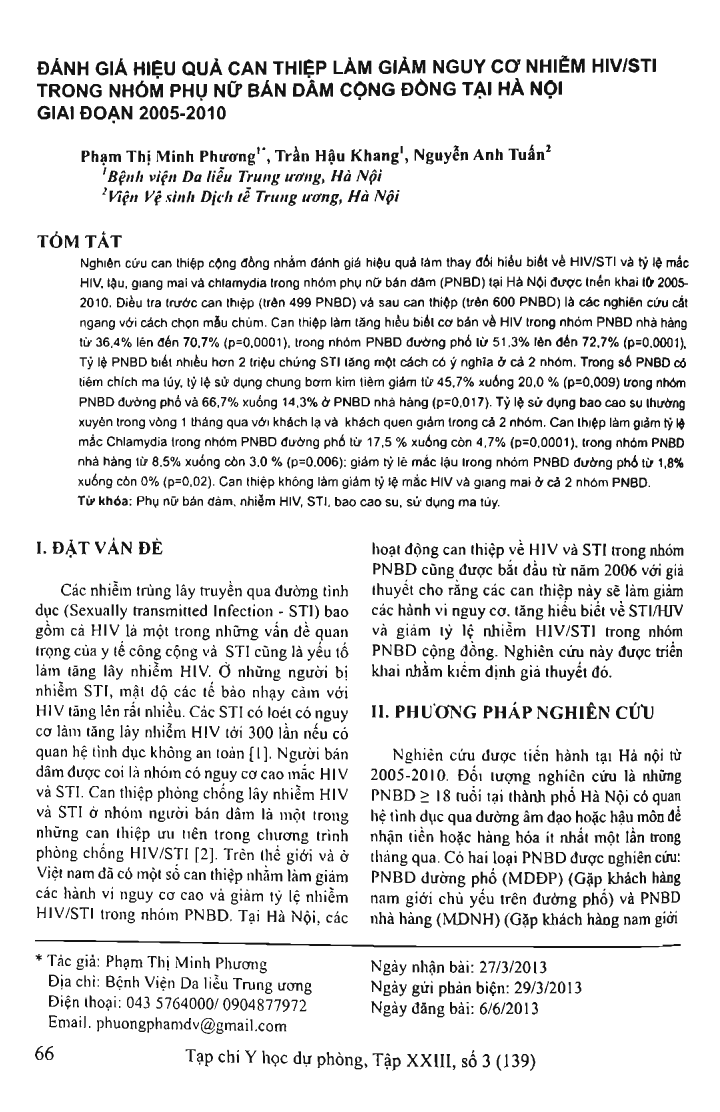
A study to assess the effect of an intervention to increase knowledge on HIV/STI and to decrease prevalence of HIV, gonorrhea, syphilis and Chlamydia in community female sex workers (FSWs) in Hanoi was implemented from 2005-2010. Pre-intervention survey (499 FSWs recruited) and post-intervention survey (600 FSWs recruited) were cross-sectional with cluster sampling. Intervention has raised HIV basic knowledge in venue-based FSW from 36,4 percent to 70,7 percent (p= 0,0001) and in street-based FSW from 51,3 percent to 72,7 percent (p=0,0001); The proportion of FSWs who knew more than 2 common STI signs increased significantly. Among FSWs who injected drugs, the proportion of people sharing needle/syringe decreased from 45,7 percent to 20 percent (p=0,009) among street-based and from 66,7 percent to 14,3 percent (p=0,017) among venue-based FSWs. Consistent condom use in 1 month prior to the surveys with one time clients and regular clients decreased in both street-based and venue-based FSWs. After intervention, Chlamydia prevalence decreased: among street-based FSWs from 17,5 percent to 4,7 percent (p=0,0001) and among venue-based FSWs from 8,5 percent to 3,0 percent (p=0,006). Gonorrhea prevalence among streetbased FSWs decreased from 1,8 percent to 0 percent (p=0,02). Intervention did not decrease HIV prevalence and syphilis prevalence in both 2 groups of FSWs.
- Đăng nhập để gửi ý kiến
